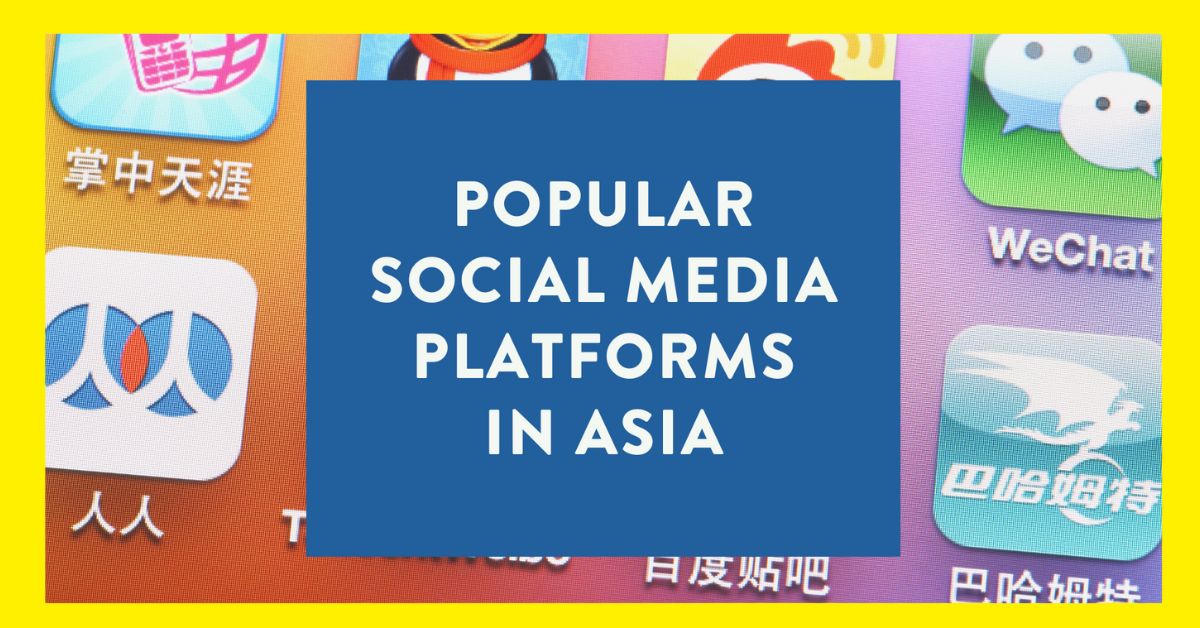Popular Social Media Platforms in Asia | Best 7 Check Here
As the digital age continues to evolve, social media platforms in Asia have emerged as powerful tools that redefine how we connect and share information. With billions of users at their fingertips, these platforms are not just about socializing, they are vital for businesses, influencers, and everyday individuals alike.
By examining the most popular platforms in the region, we can better understand the cultural nuances that drive online engagement and the opportunities that arise from them.
Get ready to uncover the key players shaping the social media landscape across Asia. Also check Snapchat planets and Snap planets.
Popular Social Media Platforms in Asia
In Asia, social media platforms have evolved into vibrant communities that reflect the diverse cultures and trends across the region.
WeChat, with its impressive 1.3 billion active users, has transformed into a powerhouse in Asia’s social media landscape. While it started primarily as a messaging app, handling around 38 billion messages daily, it has evolved into a multifunctional platform that caters to diverse user needs.
Beyond instant messaging, WeChat allows for voice and video calls, making it an essential tool for both personal and professional communication. Companies often rely on these features to maintain seamless internal communications.
The platform also serves as a vibrant social network where users can follow their favorite celebrities and brands. This creates a unique blend of social interaction and marketing opportunities, allowing users to engage with content that resonates with them.
Its integrated payment services enable users to make transactions effortlessly, from splitting bills with friends to purchasing products online, making WeChat not just a social app but a comprehensive lifestyle tool in everyday life.
Weibo, meaning ‘microblog’ in Chinese, has become a powerhouse in the social media landscape, boasting over 584 million users.
Often regarded as China’s most influential social network, it allows users to share short posts of up to 2,000 characters, similar to Twitter.
Weibo isn’t just about text; it has transformed into a dynamic platform that incorporates images, videos, and even an online game center to keep users engaged longer. This evolution reflects its adaptability and commitment to meeting the needs of its diverse user base.
The primary demographic of Weibo users is Gen Z, who flock to the platform for its vibrant community and trend-setting capabilities.
LINE
LINE, a Japanese messaging app, has become a major player in the Asian social media landscape. Originally launched as a basic communication tool, it has evolved into a multi-functional platform.
With features like payment options, users can seamlessly request rides through LINE Taxi, making transportation more convenient.
The introduction of LINE Wow further enhances its offerings, providing premium food delivery services that rival giants like Uber Eats in Japan. This shift showcases how LINE is not just a messaging app but a hub for various daily activities.
SNOW
SNOW is rapidly emerging as a standout social media platform in Asia, especially among younger users. Originating from South Korea, this messaging and multimedia app has quickly become popular for its unique blend of features.
It shares similarities with Snapchat, SNOW distinguishes itself through an impressive array of augmented reality filters and stickers.
These tools not only enhance photos but also encourage creativity and self-expression, making it a favorite for those looking to share fun moments with friends.
QQ, created by Tencent in 1999, has evolved into a vital communication tool for millions in China. This versatile platform combines instant messaging with VoIP services, enabling users to make voice and video calls seamlessly.
Beyond just chatting, QQ incorporates social networking features, allowing users to share updates and connect with friends in a vibrant online community.
KakaoTalk
It is a free mobile messaging app that has taken Asia by storm, especially in South Korea. It allows users to send and receive messages, photos, videos, and voice messages effortlessly.
Beyond just messaging, KakaoTalk is a multifaceted platform that also incorporates a social network, gaming options, and even a payment system, making it a one-stop app for many users.
This versatility has helped it maintain its popularity not only in South Korea but also in other Asian countries where users appreciate its wide range of features.
Youku
Youku, owned by Alibaba Group, stands as one of China’s leading video hosting and streaming platforms, alongside its popular counterparts, TikTok (known as Douyin in China) and Bilibili.
This platform offers a diverse array of content, from blockbuster movies and trending TV shows to live sports and the latest music hits. Accessible on computers, mobile phones, and smart TVs, Youku caters to various viewing preferences, making it a favorite among Chinese audiences.
While it is free to use, Youku also provides paid subscription options that unlock even more exclusive content and features, appealing to avid viewers who crave a richer experience.
Conclusion
The landscape of social media platforms in Asia is diverse and constantly evolving. With popular platforms like WeChat, TikTok, and Line dominating the scene, users have a variety of options to connect and share.
These platforms not only facilitate communication but also shape cultural trends and influence daily life across the continent.
As more people join these social media platforms in Asia, it will be exciting to see how they continue to innovate and adapt to user needs. Stay engaged with these platforms and explore how they can enhance your social connections!
FAQs
Is Facebook still widely used in Asia?
Yes, Facebook remains very popular in many Asian countries for connecting with friends and sharing content.
What is TikTok known for?
TikTok is known for short, fun videos where users can dance, sing, or share funny clips.
Can I use Instagram in all Asian countries?
Yes, Instagram is available in most Asian countries, but some features may differ based on local rules.







